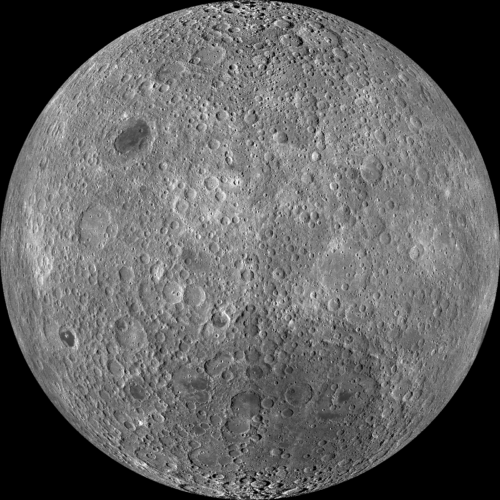Meanwhile, to learn more about this startling and fascinating new discovery, and to gain a much deeper understanding of the god Self icon, read my new book, Written In Stone:
In Part I, we saw how the world’s first cultures all shared the same religious icon―a fact that indicates they all shared a common heritage. We also saw how the icon was known later in history to Renaissance occultists, who used it in their manuscripts; calling it “REBIS” they associated the icon’s “right hand” with the sun and “left hand” with the moon. We’ll continue our research into the icon. Mainly, we’ll see how, long before the word “REBIS” was ever written, the icon was crafted by authentic operative Freemasons into their designs and constructions.
 The ancient religious icon depicted above ancient doorways.
The ancient religious icon depicted above ancient doorways.
We left off, at the end of
Part I, admiring the pose of the Rebis (image below).
We touched on the idea of how the Rebis shows us we are divine, we have a soul, we are gods. We don’t need a go-between in the form of a priest or a church to help us reach eternity. Eternity is here and now. We are eternal beings right here and now, only we don’t realize it because this ancient wisdom has been hidden from us in modern times.
This is the secret meaning of the Rebis:
 The Rebis.
The Rebis.
This is NOT a New Age doctrine. This is the Universal Religion of antiquity. It was shared by ancient cultures all across the globe, as evidenced by
the same parallel religious icon being used by all of them.
For this reason, the Rebis is the Philosopher’s Stone, the Gold of Alchemy, the Pearl inside the Oyster, and so on; the Rebis is all the hidden gems of all the lost sacred sciences and secret societies. It reveals who you really are. But it also reveals something more: How to get there. How to find your true eternal Self.
Let’s take a closer look at the Rebis, the higher You.
space
Rebis, The First Human Being, Perfect And Divine
An occult tradition holds that the Rebis was the first human being, perfect and divine. Unlike us, the Rebis was fully conscious of its own inner divine nature. The Rebis knew that its inner divine nature was different than its outer temporary human shell. This knowing or gnosis made the Rebis godlike; or, rather, made the Rebis conscious of its own godlike nature.
But then something happened, and the Rebis “fell” into becoming…who we are today.
To explain this fall, the ancient Gnostics―forerunners of the Freemasons―described a story where God created the Rebis but became jealous that the Rebis was as powerful as him, knowing his eternal godhood. So he divided the Rebis into two sexes, two independent beings weaker than the original and imperfect. One sex became predominantly male with emphasis on solar qualities like day, light, hot, fire, and dry. The other sex became predominantly female with emphasis on lunar qualities like night, dark, cold, water and wet.
However, in their unconscious memory was their true essence and lost perfection―a reminiscence of a past splendor when they were the Rebis. It is for this reason that humans are attracted by the opposite sex and unite in love and marriage, always seeking to return to their primordial state of unity, perfection and divinity (that, ironically, they never lost to begin with).
“According to Greek mythology, humans were originally created with…a head with two faces. Fearing their power, Zeus split them into two separate parts, condemning them to spend their lives in search of their other halves.”
―Plato
“You don’t need to be helped any longer. You’ve always had the power to go back to Kansas.
I have?
Then why didn’t you tell her before?
Because she wouldn’t have believed me. She had to learn it for herself.
What have you learned, Dorothy?
Well, I think that it wasn’t enough just to want to see Uncle Henry and Auntie Em. And that if I ever go looking for my heart’s desire again, I won’t look any further than my own backyard, because if it isn’t there, I never really lost it to begin with. Is that right?
That’s all it is!
But that’s so easy! I should have thought of it for you.
I should have felt it in my heart.
No. She had to find it out for herself. Now those magic slippers will take you home in two seconds!
―Esoteric Truths Revealed In The Dialogue Of The Wizard of Oz
The Rebis lives at the center inside each one of us; it is your “god” Self. As the primordial human, the Rebis is neither masculine nor feminine. It is neuter or neutral, before the sexes separated. (Spirituality is “pre-materiality”―indeed it is the “source” of materiality―before masculine and feminine.)
In addition to the masculine/feminine heads, this neutrality of the Rebis is expressed by the two-hand balance of the solar compass on one side (in the right hand) and the lunar square on the other side (in the left hand). Holding them together―uniting them, you might say―the Rebis embodies a “uniting” of the opposites of sun and moon, day and night, light and dark, hot and cold, fire and water, dry and wet, male and female, spirit and matter, soul and body, and so on, as all opposites were united in the beginning.
The “egg” shape on which the Rebis is drawn further symbolizes the Rebis’ primordial essence of unity. This is the so-called “world egg,” a common motif found in many ancient cultures. The egg is the seed of the cosmos, before the big bang you might say, holding the entire universe inside it (in potential):
 The egg shape, on which the Rebis is depicted, references
The egg shape, on which the Rebis is depicted, references
the “primordial state” of man, unified, before the sexes separated.
“A world egg or cosmic egg is a mythological motif found in the creation myths of many cultures and civilizations. Typically, the world egg is a beginning of some sort, and the universe or some primordial being comes into existence by “hatching” from the egg…”
―Wikipedia
The Rebis (your “god” Self) existed in the beginning when all the dualities in the universe were still united in the egg; thus, in order for a human being to return to that pristine state of unity…to return to consciousness of, and to more lucidly acquire the powers of, our eternal “godhood” (the powers of the Garden)…we must willfully unite all the opposites in our own life―as everything was united in the beginning.
That is to say, the Rebis is not merely a depiction of the primordial human, it is also an instruction, teaching us how to remember our true “god” Self and remember the original state of “perfection,” “divinity,” “wholeness,” and “completion” within ourselves that the Rebis symbolizes.
This primordial condition, our “god” Self (or “Source”), can be achieved by every last one of us, not just the Christs and Buddhas of history who are famous for having done it. The only way to do it is to unite the twin polarities within us and bring them back together by our own will and accord.
“In this way you will reach the fullness, the unity… How is that done? By union with each other and union within oneself…let perfect unity take the place of primitive dissociation and “division”…
…in other words, let the “outside” become as the “inside”, the “upper” like the “lower”, the male like the female; let the first become last and the last first: in short, let there be reunion of opposites…”
―Jesus Christ, Gnostic Texts (Jean Doresse, The Secret Books of the Egyptian Gnostics)
This is the great secret knowledge of alchemy and of all the other hermetic disciplines and ancient traditions, most of which survived through Secret Societies:
“…the “active” and the “passive” aspects of life, which on their own may lead to imbalance and disharmony, must be…brought together in harmony…”
―Prince Charles, Address to the 2006 Sacred Web Conference
With this in mind, the Rebis is considered among occult scholars as the end product of the alchemical “Great Work.” The Rebis is what we must all strive for, to “masterfully” unite all the opposites in our lives―a “mastery” symbolized by our “holding” or “mastering” the two sides (i.e., the “sun/right” side and “moon/left” side) in life:
“The Rebis…is the end product of the alchemical “great work.” After one has gone through putrefaction and purification, separating opposing qualities, those qualities are united once more in what is sometimes described as the divine hermaphrodite, a reconciliation of spirit and matter, a being of both male and female qualities as indicated by the two heads within a single body.”
―About.com
The theme of reuniting with our “god” Self or “Source” through “mastering” or “balancing” opposites is the long lost secret of authentic Freemasonry, as we shall now see.
space
The “God Self” Icon And The Masonic Cathedral Builders
Look closely at the following medieval images, which show architectural details from Masonic-built churches and cathedrals.
It’s clear that operative Freemasons of the Middle Ages―architects, designers, and builders who are believed to have inherited esoteric wisdom from Antiquity, which they encoded in their work―used the “god” Self icon throughout their constructions:
 Church of Sainte-Madeleine, La Clisse; Charente-Maritime, Poitou-Charentes. Middle Ages.
Church of Sainte-Madeleine, La Clisse; Charente-Maritime, Poitou-Charentes. Middle Ages.
 Nuestra Señora de la Junquera, Treviana (La Rioja)
Nuestra Señora de la Junquera, Treviana (La Rioja)
 The Church of Saint-Pierre d’Aulnay, 12th Century.
The Church of Saint-Pierre d’Aulnay, 12th Century.
 Relief carving on a stone tympanum, parish church of Charney Bassett, near Faringdon.
Relief carving on a stone tympanum, parish church of Charney Bassett, near Faringdon.
 Milan, The Basilica of Sant’Ambrogio, c. 1000 AD.
Milan, The Basilica of Sant’Ambrogio, c. 1000 AD.
 Church in Europe.
Church in Europe.
 Pieve di Santa Maria, Arezzo, Italy, c. 1000 AD.
Pieve di Santa Maria, Arezzo, Italy, c. 1000 AD.
 In the Maison de l’Art Roman in Loudun.
In the Maison de l’Art Roman in Loudun.
 Varaize capitals, France.
Varaize capitals, France.
These are just a small handful of literally thousands upon thousands of similar architectural and design motifs.
Based on these medieval images, it’s clear the ancient “god” Self icon was known to the Freemasons in the Middle Ages, when most of these buildings were built.
It seems the Freemasons used the religious icon in the buildings they designed and constructed because:
(a) they knew it was the chief symbol of an ancient Universal Religion shared worldwide during a Golden Age (as shown in Part I)
and
(b) Freemasonry itself was established as a storehouse of this ancient Universal Religion, after the rise of the Church and the Church’s Inquisition forced the Universal Religion underground
This explains why Freemasons used the religious icon so conspicuously and so often:
 Furniture detail depicting a Green Man striking the pose of the god Self icon,
Furniture detail depicting a Green Man striking the pose of the god Self icon,
the Rebis pose. Photo from my upcoming film documentary on the
Masonic architecture of Reid Castle in Purchase, New York (c. 1880s).
Authentic Freemasonry―before the fraternity was infiltrated and hijacked by the Elite two centuries ago and transformed into a subversive tool―taught spiritual seekers how to tap into and “see” their inner, spiritual Self, the “god” Self or “soul within.”
Awakening to one’s inner spiritual Self was done not by turning one’s back to the bad and only seeing the good in life, but by holding both sides of life, by grasping both “pairs of opposites” of life. This idea is conveyed by the outstretched hands and clenched fists of the religious icon:
 Closeup of photo above. Masonic architecture of Reid Castle in
Closeup of photo above. Masonic architecture of Reid Castle in
Purchase, New York (c. 1880s) shows the religious icon.
This act of awakening to our inner Self by reconciling opposites, a spiritual practice that once bound the Masonic brotherhood together, was symbolized in Masonic art by a giant Eye symbol, the Third Eye. One of the great lost secrets of Freemasonry is that we each have a Third Eye hidden in our foreheads, and this Third Eye can be “activated” by each one of us. It’s done when we “balance” our twin solar and lunar halves. Opening the Eye allows us to look inward and see our inner Soul or inner “god” Self:

Masonic drawing shows the balancing of sun at right and moon at left,
leading to an awakening of the Third Eye in the center. The Third Eye
sees the inner soul, allowing a seeker to realize that he/she is an eternal being.
This mystical art of awakening the Third Eye, achieved through a process known as “balancing opposites” or “reconciling opposites,” is an ancient procedure inherited by the Freemasons by which one “finds” their spiritual Rebis within.
On Masonic Tracing Boards and other Masonic drawings, the sun is on the right side and the moon is on the left, with middle Eye (or Third Eye) above. This is a clandestine image that instructs initiates on their potential as humans; namely, the potential to balance their twin natures and awaken their Cyclopean eye of spiritual wisdom:
 Masonic Tracing Board shows the balancing of sun at right and
Masonic Tracing Board shows the balancing of sun at right and
moon at left, leading to an awakening of the Third Eye in the center.
Shown below, this Masonic image corresponds precisely with the ancient Eastern system of Kundalini Yoga, where the solar Pingala channel on the right and lunar Ida channel on the left balance and activate each other to awaken the centered Third Eye above:

Kundalini Yoga shows the balancing of the solar pingala
channel at right and lunar ida channel at left, leading to
an awakening of the ajna chakra or Third Eye in the center.
“Yoga” is the precise wisdom conveyed in Masonic Tracing Boards.
Of course, the idea of awakening one’s “Third Eye” is pure blasphemy to the Church, because seeking divinity without priestly intervention is heretical and all such practices are considered the work of the devil.
Freemasonry has for centuries been labeled “evil” and “satanic” by the Church because the Church has long known that the Order is a repository of the lost ancient wisdom of awakening the Third Eye; and this is precisely why the Freemasons have been outlawed, persecuted, and even murdered en masse by the Holy See:

“Ultimately, at the highest level of initiation, the Mason comes to learn the most profound, most secret essence of the Brotherhood…what Pike cryptically calls the “Mystery of Balance” or coincidence of opposites.
Pike takes this mystery from the traditions of alchemy…and, in fact, the frontispiece of chapter thirty-two of Morals and Dogma is a famous alchemical engraving of the Rebis or Androgyne…
This is…the secret of universal equilibrium between good and evil, light and darkness. All contraries emanate from a single God. Male and female, sun and moon, light and dark—symbolized by the Masonic compass and square, and by the two pillars Jachin and Boaz—all come from the same source, and all reunite in the highest initiation.”
―Hugh B. Brian, Secrecy and Symbolic Power in American Freemasonry
The Western religions―beginning with the Jewish strain―have distorted this formula by externalizing divinity and eternity. They have turned the ancient “god within” images inside out. We now worship something external.
As a result, we no longer believe―as, for example, the ancient Egyptians believed―that the omnipotent and omniscient powers of “divinity” and “eternity” apply to ourselves, reside within ourselves.

Heh – Egyptian symbol of “eternity.” Heh stands for the eternal god Self we all have within.
“…Heh is a personification of “infinity” and the related concept “millions.” Heh is always represented as a kneeling man holding a palm rib (year) in each hand―the image symbolizing millions of years…”
―Daphna Ben-Tor, Scarabs, Chronology, and Interconnections
We have become completely blind to our “god” Self, the eternal part of us the ancients symbolized by the religious icon, the part that was never born and never dies.
 Heh shows how art in Egypt was used to express metaphysical truths.
Heh shows how art in Egypt was used to express metaphysical truths.
“Heh” symbolizes our eternal inner soul or inner god Self.
 “Remember who you are by striking the balance of opposites,” this pose urges the viewer,
“Remember who you are by striking the balance of opposites,” this pose urges the viewer,
“Die to your lower self, and realize the eternal and divine Life (ankh) within
you―and then you will never die.” This was the essence of Egypt’s religion.
Instead of recognizing our own eternal Self, we in the West award qualities like “divinity” and “omnipotence” to external “gods” (like the Jewish Yahweh) and endow these external gods with the ability to judge us fit or unfit to bequeath such powers upon us at death. We’ve lost touch with who we really are; we have relinquished all contact with our higher essence.
Orthodox Christianity teaches that Jesus is “that guy” who is the son of the “old man upstairs.” They are “external” gods who may or may not treat us right. The same goes with our Western conception of the Buddha and Allah; we perceive them as “out there” rather than “in here.” The truth is, religion (Latin: religare or to “link back”) is meant to be focused not around them, but around you!
You are the great “God” in heaven, and it’s the Trinity of your balanced being, your balanced opposites, that you must strike in order to awaken to this realization.
An external “God” did not create the universe, according to this tradition. We, each one of us, are God (not the biblical “God” but the ground and essence of the Universe) and we created our own universe and we are right now enjoying our own Creation by living inside of it. Only we’ve lost touch with who we really are:
“This universe is not outside of you. Look inside yourself; everything that you want, you are already that.”
―Rumi
“As long as you still experience the stars as something above you, you still lack a viewpoint of knowledge.”
―Friedrich Nietzsche
“You think of yourself as a citizen of the universe. You think you belong to this world of dust and matter. Out of this dust you have created a personal image, and have forgotten about the essence of your true origin.”
―Rumi
“Everything you see has its roots in the unseen world. The forms may change, yet the essence remains the same. Every wonderful sight will vanish; every sweet word will fade, But do not be disheartened, The source they come from is eternal, growing, Branching out, giving new life and new joy.
“Why do you weep? The source is within you. And this whole world is springing up from it.”
—Rumi
“All learning is remembering.”
—Plato
“We cannot teach people anything; we can only help them discover it within themselves.”
- Galileo Galilei
This wisdom survived in the East, uninterrupted, in the traditions of Hinduism and Buddhism.
But in the West, it became eclipsed by Christianity.
space
The Christ Deception
Though Jesus said we all have an “Immortal Spirit” or “Christ” within us (referring to our “Source” or “god” Self) his teachings quickly got turned inside out by the Church. Distorting his message, the Church exalted Jesus the man, turning him―and him only―into history’s single great “Immortal Spirit” and “Christ.”
This was a huge and hideous mistake, according to genius 19th and 20th century scholars, like Alvin Boyd Kuhn (1880 – 1963) and Gerald Massey (1828 – 1907), and, more recently the Rhodes scholar Tom Harpur:
“…Christ was the Immortal Spirit in man… It did not and could not depend on any single manifestation in one historic personality.”
Historic Christianity originated with turning the…teachings inside out and externalizing the mythical allegory in a personal human history.…a huge and hideous mistake…”
―Gerald Massey, Gerald Massey’s Lectures
“…the Christ principle is potentially in every one of us.”
“Christ of the myth became a flesh and blood person identified with Jesus.”
―Tom Harpur, The Pagan Christ
By denying the soul’s divinity and pre-existence, Christianity wiped away a valuable fragment—indeed the key principle—of the ancient Universal Religion. As a result, the true power of the “soul within” or “god” Self teaching became lost.
Humanity became orphaned. The result? Centuries of men and women clinging to the church like orphaned children clinging to their malevolent step mother:
“Christianity took the type figure of the divine in man for the Divine Man. It exalted the alleged Divine Man…but left the divine in man to grovel in the dust…
…it shifted the center of gravity, so to say, from the cult of the Christ within to that of the Christ without, or from the Christ as principle to Christ as a man.”
―Alvin Boyd Kuhn, The Lost Light
Christianity changed the message of the “god” Self―which is the central teaching of the ancient universal icon―and by changing this message Christianity changed humanity.
The idea that we, like Jesus, can acquire the gnosis that leads to Christhood was suppressed. This is why today we (Westerners) believe there is only one God in heaven (and He is not you) and there is only one manifestation of God on earth, and that’s Jesus Christ (and he is not you either).
By placing itself as the intermediary between an external “God” and the masses, the Church built an empire, while simultaneously covering up ancient and ancestral spiritual wisdom. Sinister, but ingenious.
It was the death of our divinity, and this single event triggered a general decline in Western civilization, the calamity of which we have not yet recovered from. It sent shockwaves through a once-flourishing Europe, leading directly to the Dark Ages. In fact, all of Western history under Christianity can in a sense be summed up as the story of the spiritual suppression of a large part of humanity.
Despite this suppression, many tried to keep the lost light glowing and the ancient tradition alive. During the reign of Christianity there emerged Secret Societies―artists, poets, and philosophers―that kept the “god” Self wisdom from dying. They did this by encoding the secret wisdom in art, architecture and literature.
Note how, in the following works of art, Christ strikes the same pose as the religious icon―his right hand aligns with the sun and left hand with the moon:
Crucifixion (Città di Castello Altarpiece) by Raphael. 1502-03. National Gallery, London.
His right hand is paired with the sun, left hand with the moon.
 Romanesque Crucifix. Right hand sun, left hand moon.
Romanesque Crucifix. Right hand sun, left hand moon.
The secret message of these portraits is that it’s not just Jesus who can achieve the balance, but all of us can achieve it; Jesus is only the local representation of it, the local model.
If we follow him and do as he has done we too can remember who we are (our “Christ within”); we too can recognize the gnosis of our own inner godhood, which is our birthright. We too can become conscious of our true “god” Self when we balance the opposites (as Jesus did, as shown here).
space
The Michelangelo Code
This “balance” theme is the secret meaning behind some of history’s most famous works of art. One example is The Sistine Chapel. The ancient religious icon is visible here too, painted by the famous 16th Century Renaissance artist Michelangelo. Look at how Michelangelo depicted “God” striking the balance of opposites between the sun and the moon:
The Sistine Chapel by Michelangelo. It says ‘Godhood is
achieved by balancing the opposites (of sun and moon).’
God’s right hand points to the luminous sun, while his left points to the dimmer moon—illustrating the “doctrine of duality.” Centered between them, yet leaning toward the light, God is shown striking the balance between the two contraries.
The ramifications here are many. Was Michelangelo privy to the secrets of the “god” Self icon? Was he conveying his belief in the ancient Universal Religion, a wisdom-tradition that’s totally different than mainstream Christianity? Is Michelangelo here saying we can discover our “god” Self within, which is who we really are, if we balance opposites?
This centuries-old image indicates that Michelangelo understood the occult significance of the pairs of opposites. It also shows that Michelangelo understood that “God”—or, rather, our own “god within”—can be found centered between the opposites, which is the basic teaching of this religious icon’s pose.
Note the sun and moon’s parallel size and shape. Michelangelo clearly understood that in order to artistically convey their “balance,” and thus be considered a “pair” of opposites by the viewer, the sun and moon needed to have equal diameters.
The equilibrium of their opposition now established, the sun and moon’s duality is balanced by the third power centered between them—(the) God himself. The sunny half of God is bright while the lunar half is darker, which Michelangelo may have used to convey the idea that while we are human, we—our eternal “soul within” or the “god within” us—now has a “bright” and “dark” side, the result of our manifesting into the material world; the bright side being more aligned with our true nature, and more reflective of the inner soul.
 In the New World, it was the god Viracocha who conveyed the balance of
In the New World, it was the god Viracocha who conveyed the balance of
opposites religion, similar to Osiris in the Old World. It was Viracocha
whom the Andean masses followed and imitated. Viracocha was often
depicted holding twin serpent/thunderbolt-staffs, in the same pose as Osiris
in the Old World. The carving in the photo above crowns the lintel of a
mystical freestanding doorway called The Gate of the Sun in Tiahuanaco,
Bolivia, a famous eastward facing monolith hewn from a single Cyclopean
stone block. (“As the person of the sun door,” wrote Joseph Campbell, “he is
the fountainhead of all the pairs of opposites.”) The Staff God is visible not just
here at Tiahuanaco, but everywhere in the ruins of the ancient Andes; among
civilizations that eventually evolved into the Incas. It is the ultimate symbol
of balance and transcendence of opposites, which is precisely the main
religious theme across all of the Americas.
In essence, by encoding the pagan religious icon into this design of God, Michelangelo seems to have secretly been expressing the idea that there is no “God” as we’ve been taught to understand it in the Western monotheistic tradition—only a “god within” which means we are the God; the “god” is a part of us and we are a part of it.
This is the universal instruction expressed by the “gods” of the pagans, like Zurvan, Gilgamesh, Viracocha and Osiris, to name a few. Only scholars today simply do not realize it:
 The “god” Zurvan, the so-called “creator deity” of the ancient Persian religion,
The “god” Zurvan, the so-called “creator deity” of the ancient Persian religion,
was neither Good nor Evil, but a spiritual essence that predates Good and Evil,
and indeed created Good and Evil as well as all the other opposites (in the photo
above he is shown handing “good” and “evil” out to the right and left sides). As
such, Zurvan was never understood to be an “external” being, but rather a
symbol of the true eternal Self. Zurvan is the eternal silent and motionless
Self that takes part in manifestation via the opposites.
It is noteworthy that Michelangelo depicts God leaning toward the light, while still striking the balance, which may be an instruction of what we all must do in life, as the light side more perfectly reflects our true inner nature.
“Every act in life yields pairs of opposites in its results. The best we can do is lean toward the light, toward the harmonious relationships that come from compassion with suffering, from understanding the other person.”
―Joseph Campbell
Exactly how Michelangelo knew this occult wisdom is unclear. It may have been communicated to him through a Secret Society like Freemasonry; Secret Societies flourished since the dawn of Christianity. Such fraternities usually attracted artists, humanitarians, open-minded curious and intellectual men.
space
Conclusion
The same religious icon has been uncovered in ruins across the ancient world. This evidence strongly suggests our ancestors globally all followed the same Universal Religion, symbolized by the icon.
The god Self religious icon was used across the ancient world,
spanning continents and oceans. This evidence points to
a Golden Age in the remote past.
A bit of detective work shows us that the basis of this Universal Religion is the belief, common among every ancient civilization, that we are not our physical bodies; we are really an eternal “god” Self or soul that was never born and never dies. The god Self is a part of us that we are not conscious of while we are man, but that truly exists; the god Self was never born and never dies and thus survives the death of our bodily self.
The wisdom of the god Self lived on in the East unabated, but became suppressed by Christianity in the West, leading to the hegemony of the Catholic Church and the growth and evolution of underground Secret Societies like the Freemasons, who encoded the icon throughout their designs and constructions in an effort to keep its wisdom from dying:
 The god Self religious icon was known to the Freemasons. They used it in their art and architecture, as shown.
The god Self religious icon was known to the Freemasons. They used it in their art and architecture, as shown.
Centuries after the operative Freemasons encoded the icon into churches, castles and cathedrals, renaissance occultists learned about the icon and began using it in their manuscripts; always careful to assign the solar to the right side and the male, and lunar to the left side and the female.
 The god Self religious as depicted in Renaissance manuscripts.
The god Self religious as depicted in Renaissance manuscripts.
To learn more about the god Self icon read my new book, Written In Stone:








































































































